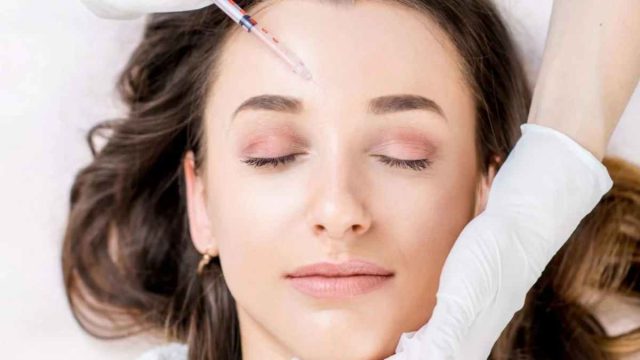Botox and filler are two very popular anti-aging and beauty treatments nowadays. They’re not just for celebrities anymore. Nor are they a taboo subject to talk about. Many people get them as part of their regular grooming routine.
But the two are very different, both in their substances and how they work. So, in this article we’ll attempt to answer the question: should I get Botox or filler for my anti-aging treatment?
Should I get Botox for my anti-aging treatment?
Contents
Botox works by blocking nerves that cause muscles to contract.
Muscles contract on the face normally when we make facial expressions. For example, when you frown or cross your eyebrows, your muscles are contracting, and creating folds in your skin. When you are not making facial expressions, your muscles are relaxing.
The more you make facial expressions, the more their fold lines become permanent.
However, you may notice that even while at rest, your muscles are contracting a little, even if involuntarily. These contractions can cause both visible and long-term wrinkles.
Botox can stop facial expressions from happening, or it can lessen their ability to happen to the full extent that they can otherwise. This doesn’t necessarily result in a ‘frozen’ look, such as in times past. So-called, “baby Botox” (i.e. lower doses of Botox) can be used to subtly reduce muscle movement to prevent wrinkle formation.
For the above reasons, Botox can be thought of as a preventative wrinkle treatment.
Botox typically lasts around 3 to 4 months for cosmetic uses.
Should I get dermal fillers for my anti-aging treatment?
Dermal fillers work by adding volume under the skin via a cannula or needle. They are commonly used in areas where the face has lost fat, muscle and bone density. This is what causes skin to sag, and appear wrinkled.
Dermal fillers can be made of a variety of injectable substances. The most popular one is hyaluronic acid (HA). This is a dissolvable material, and is made by the body naturally. Scientists formulate hyaluronic acid into different molecular forms so that it lasts longer under the skin and forms a ‘bouncy,’ flexible gel.
However, there are other types of dermal fillers, such as those made of poly-L-lactic acid (PLLA), Polymethyl methacrylate (PMMA), calcium hydroxylapatite (CaHA) and others.
Many dermal fillers last between 6 months to 5 years. While permanent fillers are on the market, they are not advisable, since they can cause complications. Not only that, the body does not absorb them, which means their results are permanent unless they are removed surgically (if at all possible).
Name brand dermal fillers, such as Juvéderm®, are popular and widely used. They can be used to raise cheeks, raise folds, contour the jawline and chin, fill lips, reduce the appearance of eye circles and more.
Is Botox or dermal filler best for my needs?
It’s important to consider the following before making a decision to get Botox or filler:
What does your doctor say?
Consult with a licensed and reputable provider to discuss the potential value, benefits and risks of Botox and filler for your case. Sometimes people want a lot of Botox and filler to ‘go big or go home.’ However, this can look worse than more subtle, lower doses.
Not only that, but sometimes, a skilled injector can achieve the result you want with a lower dose than you would expect.
Consider your budget and the cost of treatment
Think about the reason why you want to get Botox and filler, and if there are alternative options that may be more appropriate for your goals. A medical aesthetic clinic with many technologies on hand will not need to sell you Botox or filler if those are not the best solutions for you. They will be able to tell you truthfully if you need skin tightening instead, for example.
Never shop based on price; you may be getting diluted Botox, or not enough of a dose of filler to achieve what you are trying to fix. This can leave you feeling like you paid for nothing when, for a little more, you could have gotten the full effect you were going for.
Plus, if you are going to invest in our skin, you may want to consider how your daily lifestyle can affect your aging. For example, are you using sunscreen regularly? If not, then you should begin doing so. No technology can help reduce your signs of aging like prevention can.
Remember that Botox and filler are not permanent
Keep in mind that Botox and filler are not permanent solutions and will need to be repeated to maintain their results.
A final word: when getting Botox and filler, consider safety and value
Remember to always put your safety first and to do your research before making any decisions about cosmetic treatments. Qualified, experienced doctors have more training to perform these procedures safely. For example, many blood vessels are near the injection sites, which must be avoided at all costs.


